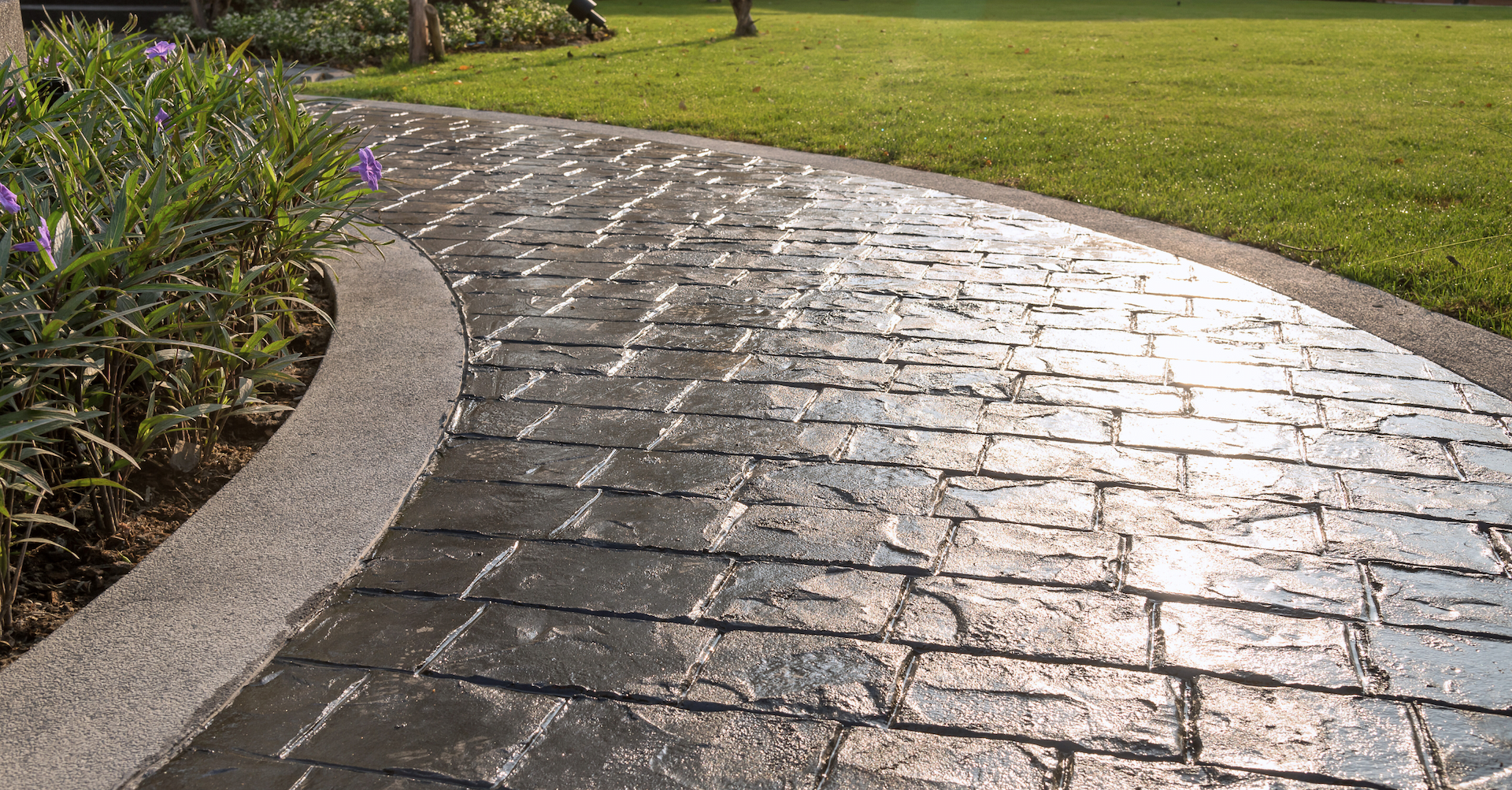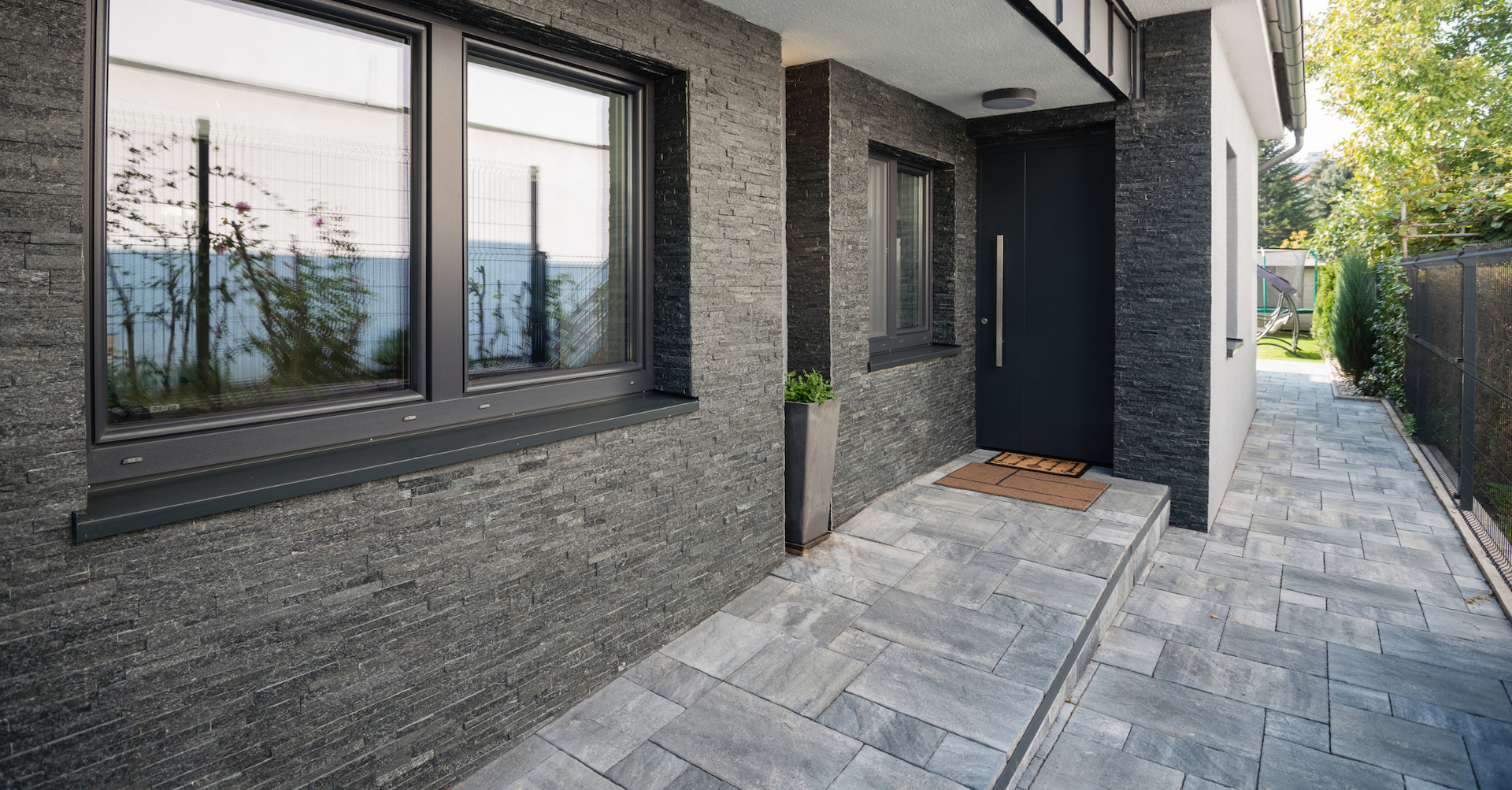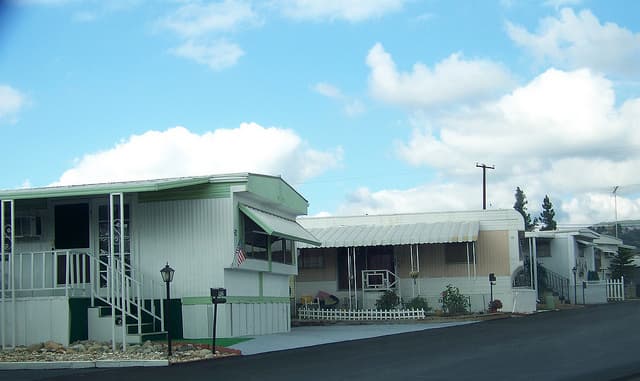Are you looking for a contractor?
Submit our quick form and get quotes now!
Table of Contents
7 min read
What Is Stamped Concrete?


7 min read
What Is Stamped Concrete?
Exterior renovationsWhat Is Stamped Concrete?
True to its name, stamped concrete combines two things: concrete and stamps. While this definition paints a rather clear picture of what this building material actually is, it’s still important to delve into its other defining factors, thereby taking a closer look at other types of concrete.
What’s stamped concrete?

Source: Canva
Stamped concrete, also known as “textured” or “imprinted” concrete, is a cutting-edge landscaping and building method that has amassed quite a following in recent years. Going back to the etymology of the word “stamp,” which is from the Middle English “stampen,” meaning "to pound or crush," and could possibly have come from the Old English “stampian,” meaning "to pound in mortar," but in plain, good ol’ English, it simply means to “impress a pattern or a mark.”
This type of concrete has an extensive selection of patterns and colours. The method used to make stamped concrete consists of pouring 4-inch to 6-inch thick pre-coloured slabs of cement on-site. Then, rubber moulds are used to imprint designs on the concrete’s surface while the latter is still malleable.
The Advantages of Stamped Concrete
Stamped concrete is low maintenance, elegant, durable, and cost-effective. What’s more, it’s important to note that this material is fire-, insect-, rot-, and mould-resistant. Given the aforementioned qualities, it’s no wonder this material is often used to mimic others like pavers, fieldstones, ceramic tiles, brick, and even wood at times. Fun fact: Concrete is increasingly resistant over time, which is a factor that sets it apart from other types of materials available on the market.
Besides, stamped concrete can be used just about anywhere, whether it’s to revamp the coping around a pool, walkways, balconies, parking lots, stairs, or even patios. That’s proof enough of just how versatile this material is, which is without a doubt one of its greatest assets.
Picking the Right Concrete Type for a Specific Task

Source: Canva
Concrete is a paste with varying consistencies that, when cured, becomes solid after having been moulded in a factory or poured directly on-site. In its natural state, concrete is a combination of minerals, made with aggregates (rock fragments), and a binder, such as cement, bitumen, or clay. Note that what’s referred to as concrete will change based on the type of binder used.
If the binder used happens to be cement, then it’s simply referred to as concrete or cement-based concrete, and as mortar when sand-based aggregates are used. However, if clay or silt is used to bind everything together, it results in a soil-cement mixture. There are also several other types of concrete, like asphalt concrete, fibre-reinforced concrete, and geopolymer cement, to name a few.
Cement-Based Concrete
Since the 20th century, cement-based concrete has risen in the ranks, sitting in the number two position, and is one of the most used mineral materials in the world. It has also become the most used building material on the planet. Cement-based concrete is especially environmentally hazardous given its energy-guzzling nature and is used in more than two-thirds of constructions. As such, it’s responsible for more than 5% of all GHG emissions.
The littoral zone, meaning the area along the edge of a body of water and solid ground, was destroyed in the process. And, in more than three-quarters of all cases, it was a direct result of using thin sand to manufacture cinder blocks. Note that in layman’s terms, when speaking of concrete, ultimately, one is referring to cement-based concrete.
Furthermore, it’s particularly important to emphasize that certain types of concrete incorporate photocatalysis cement, which has self-cleaning properties and helps mitigate pollution. These cement types can decompose sulphur, just like nitrogen oxide, resulting in their capacity to effectively purify the air.
Soil-Cement
On the other hand, soil-cement (also known as rammed earth or daub), was primarily used before the 20th century. This type of concrete was clay- and silt-based. And, at the time, these materials were available for free and in large quantities, sourced directly from the ground. Since it wasn’t profitable from an economic standpoint, during the Industrial Revolution, industries and politicians discontinued its use. Nowadays, soil-cement is still used, but isn’t as sought-after compared to cement-based concrete.
Nevertheless, it’s an eco-friendlier option, and its manufacturing method is much simpler too. Clay and silt are free, and the transformation process of rammed earth requires no chemical agents.
How to Clean Stamped Concrete
Cleaning stamped concrete is rather straightforward and can be done following these key steps.
Regular Cleaning
Stamped concrete has to be regularly cleaned to remove dirt, dust, and debris. Use a soft-bristle broom to remove debris from the surface, then use a garden hose with a moderate-pressure nozzle to rinse the surface.
Use a Cleaner
If your stamped concrete has stubborn stains or oil stains, you might have to use a specially designed cleaner made for concrete surfaces. Make sure to follow the manufacturer’s instructions and test the cleaner on a small, unapparent spot before using it over the entire surface.
Repair Cracks
Regularly inspect your stamped concrete to locate any fissures or damage. If you spot any, use a specially designed repair putty to fill in and seal the gaps. Follow the manufacturer’s instructions and allow for ample drying time prior to walking or driving over it.
Weatherproof
To prolong your stamped concrete’s lifespan, it’s highly recommended to apply a coat of protective sealant every year or every other year. The sealant will safeguard the surface from discoloration, stains, and wear brought on by the elements, such as the sun, rain, and snow. Make sure to choose a sealant made for stamped concrete surfaces.
Say Nay to Corrosive Chemical Products
Avoid using corrosive chemical products, such as salt-based ice melters on stamped concrete, as they can damage the surface. Use salt-free ice melters or more gentle alternatives to prevent damaging the surface.
By following these simple steps and regularly cleaning the surface, your stamped concrete will withstand the test of time and still look good.
How much does a stamped concrete structure cost?
Naturally, knowing the price of such a material is worthwhile for whoever is looking to benefit from its myriad of qualities.
To that effect, one must first establish the fact that setting up a stamped concrete structure is more expensive compared to standard concrete. For a more detailed overview of the costs involved, note that the cost of installing a stamped concrete structure is roughly $14.50 per square foot (using only one colour).
For a more elaborate pattern and the use of two or three colours, the asking price is closer to $22 per square foot. Ultimately, paying upwards of $29 per square foot isn’t unheard of for all projects using several different colours, more refined imprinting methods, or handmade finishes.
Stamped Concrete: An Affordable Elegance
Stamped concrete was unveiled as an aesthetic and long-lasting solution in the construction industry. This ingenious technique creates elegant surfaces, faithfully mimicking the look of other, costlier materials. Whether it be for alleyways, terraces, or other outdoor surfaces, stamped concrete is an appealing alternative, meshing concrete’s robustness with the versatility of patterns and textures. It’s beckoning to challenge the boundaries of architectural creativity while preserving the practical advantages of concrete, making for an enticing solution for durable and aesthetically pleasing outdoor spaces.
Get 3 quotes for your stamped concrete building project
RenoQuotes.com can help you get quotes for your stamped concrete project. By submitting your project, we’ll put you in contact with top-rated contractors. Fill in the form on the homepage (it only takes a few minutes) and get estimates from trusted professionals.
Dial 1-844 828-1588 to speak with one of our customer service representatives.
Last modified 2023-12-07
Looking for something else?
Related articles
The latest industry news, interviews, technologies, and resources.

RenoQuotes.com • 04 Apr 2024
When temperatures are soaring to a stifling 32 degrees, and the sun is beating down, what better way is there to cool off than in a pool? If you’re fortunate enough to have one in your backyard, chances are you’re already familiar with this coveted summer treat.

RenoQuotes.com • 07 Nov 2023
With summer weather and sunshine knocking at your door, landscaping is most likely at the forefront of your mind. Even though your goal is to make it look nice, maintenance is rarely a cause for excitement. However, plants need their share of attention, and so does your lawn.

RenoQuotes.com • 07 Nov 2023
If you’re living in a mobile home or you’re in possession of one for traveling, chances are you're already well aware of the benefits. A mobile home is a dream for nomads, travelers, and all those in between. If you’re one of the lucky ones who has access to a mobile home, you may feel a little bit stunned by the size of the structure.

N/A • 07 Nov 2023
In the middle of winter or even the early days of spring, who doesn't enjoy a long, hot shower to warm up before heading out the door? Even though a hot shower feels great, unfortunately, your bathroom doesn't share the sentiment.

Cynthia Pigeon • 07 Nov 2023
If knocking down a load-bearing wall is no simple matter, then knocking down a non-load-bearing wall isn't a walk in the park either. To know just how to carry out this kind of task, and achieve a decent result, here are the necessary steps and precautions to follow.